The Academia Historica on Saturday published documents and eyewitness accounts of the Chinese Nationalist Party (KMT) regime’s human rights abuses during the Martial Law era.
Academia Historica President Chen Yi-shen (陳儀深) told a news conference in Taipei that the published books and papers represented more than 20 years of research and field studies by himself and other researchers.
“Although there are still aspects which require more study, we have made a lot of progress over the decades to document state violence and atrocities against citizens from that period,” he said.
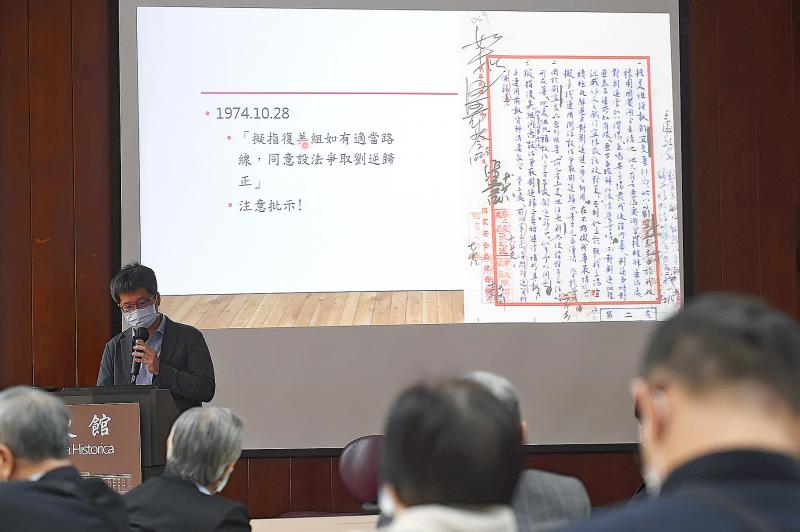
Photo: Chen Chih-chu, Taipei Times
Among the works released was the three-volume Documentary Collection on Political Incident: The Henry Liu Case on the Oct. 15, 1984, killing of China-born US writer Henry Liu (劉宜良), who used the pen name Chiang Nan (江南).
Commissioned by the Academia Historica and the Taiwan Human Rights Museum, the volumes contain archival materials, interview transcripts and government papers on the death of Liu, who was shot at his home in Daly City, California, said Wu Chun-ying (吳俊瑩), one of its authors.
Liu, a vocal critic of the KMT regime, was best known for writing an unauthorized biography of Chiang Ching-kuo (蔣經國), who was later to take over the regime from his father, then-president Chiang Kai-shek (蔣介石).
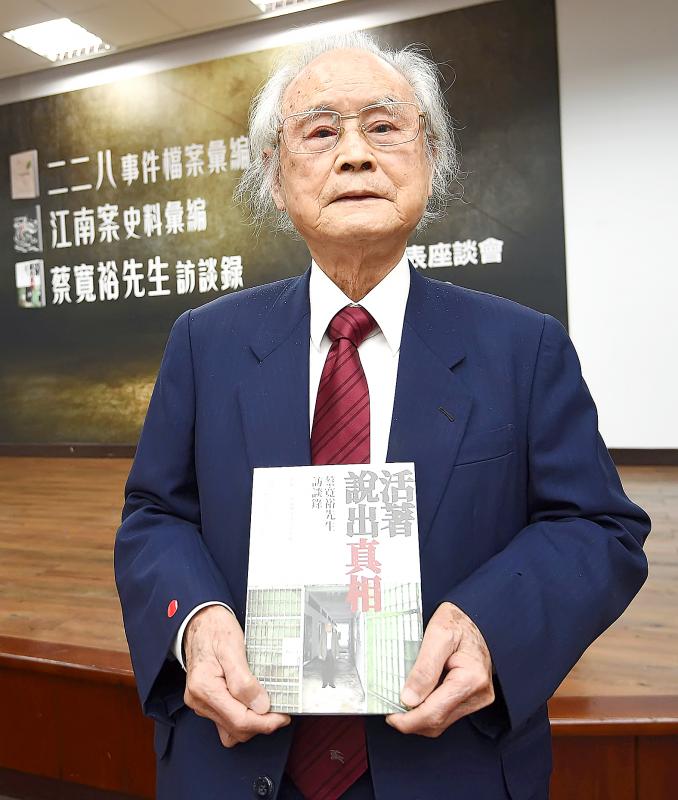
Photo: Chen Chih-chu, Taipei Times
Wu said the documents and records from Taiwan and the US corroborated findings that the KMT regime knew about the planned murder of Liu, which was authorized by the Military Intelligence Bureau.
Then-vice admiral Wang Hsi-ling (汪希苓), head of the bureau, instructed Chen Chi-li (陳啟禮) of the Bamboo Union to murder Liu, which he did with two other members of the gang, Wu said.
An FBI and US Department of Justice investigation found evidence that implicated the Military Intelligence Bureau and the Bamboo Union in the murder, and they sent a team headed by Mark Richard, then deputy assistant attorney general for the criminal division of the department, to Taiwan to interview people connected with the case, Wu said.
The declassified documents showed that one communique from the department to the KMT government expressed grave concerns about Taiwanese authorities’ handling of the case, Wu said, adding that the documents also suggest that the government’s top leadership might have known about and authorized the murder.
Another book revealed at the news conference was on White Terror victim Tsai Kuan-yu (蔡寬裕).
After graduating from university in the 1950s, Tsai became a target of the KMT regime, and was arrested and charged twice, spending a total of 13 years in prison.
He was also involved in the Taiyuan Prison Insurrection on Feb. 8, 1970, when he and other political prisoners at Taitung County’s Taiyuan Prison attempted to escape to begin an armed insurrection against the KMT regime.
Tsai, now is in his late 80s, said he was asked by Tsan Tien-tseng (詹天增), one of the leaders of the insurrection who was executed soon after the incident, to survive the ordeal and tell the world what had happened.
“It is my duty to do so, for my compatriot in the prison who had sacrificed his life,” Tsai said.
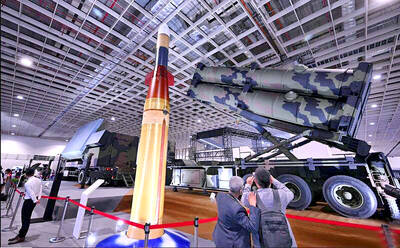
Taiwan is to commence mass production of the Tien Kung (天弓, “Sky Bow”) III, IV and V missiles by the second quarter of this year if the legislature approves the government’s NT$1.25 trillion (US$39.78 billion) special defense budget, an official said yesterday. Commenting on condition of anonymity, a defense official with knowledge of the matter said that the advanced systems are expected to provide crucial capabilities against ballistic and cruise missiles for the proposed “T-Dome,” an advanced, multi-layered air defense network. The Tien Kung III is an air defense missile with a maximum interception altitude of 35km. The Tien Kung IV and V
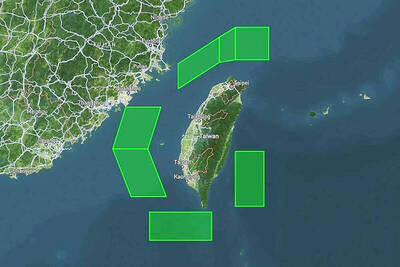
The disruption of 941 flights in and out of Taiwan due to China’s large-scale military exercises was no accident, but rather the result of a “quasi-blockade” used to simulate creating the air and sea routes needed for an amphibious landing, a military expert said. The disruptions occurred on Tuesday and lasted about 10 hours as China conducted live-fire drills in the Taiwan Strait. The Civil Aviation Administration (CAA) said the exercises affected 857 international flights and 84 domestic flights, affecting more than 100,000 travelers. Su Tzu-yun (蘇紫雲), a research fellow at the government-sponsored Institute for National Defense and Security Research, said the air
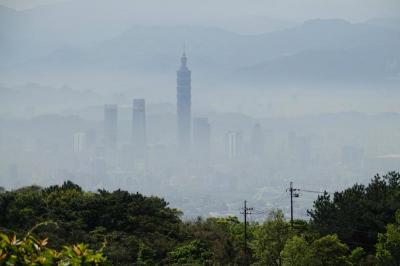
A strong continental cold air mass is to bring pollutants to Taiwan from tomorrow, the Ministry of Environment said today, as it issued an “orange” air quality alert for most of the country. All of Taiwan except for Hualien and Taitung counties is to be under an “orange” air quality alert tomorrow, indicating air quality that is unhealthy for sensitive groups. In China, areas from Shandong to Shanghai have been enveloped in haze since Saturday, the ministry said in a news release. Yesterday, hourly concentrations of PM2.5 in these areas ranged from 65 to 160 micrograms per cubic meter (mg/m³), and pollutants were

Taiwan’s armed forces have established response protocols for a wide range of sudden contingencies, including the “Wan Chun Plan” to protect the head of state, the Ministry of Defense (MND) said today. After US President Donald Trump on Saturday launched a series of airstrikes in Venezuela and kidnapped Venezuelan President Nicolas Maduro, concerns have been raised as to whether China would launch a similar “decapitation strike” on Taiwan. The armed forces regularly coordinate with relevant agencies and practice drills to ensure preparedness for a wide range of scenarios, Vice Minister of National Defense Hsu Szu-chien (徐斯儉) told reporters before a